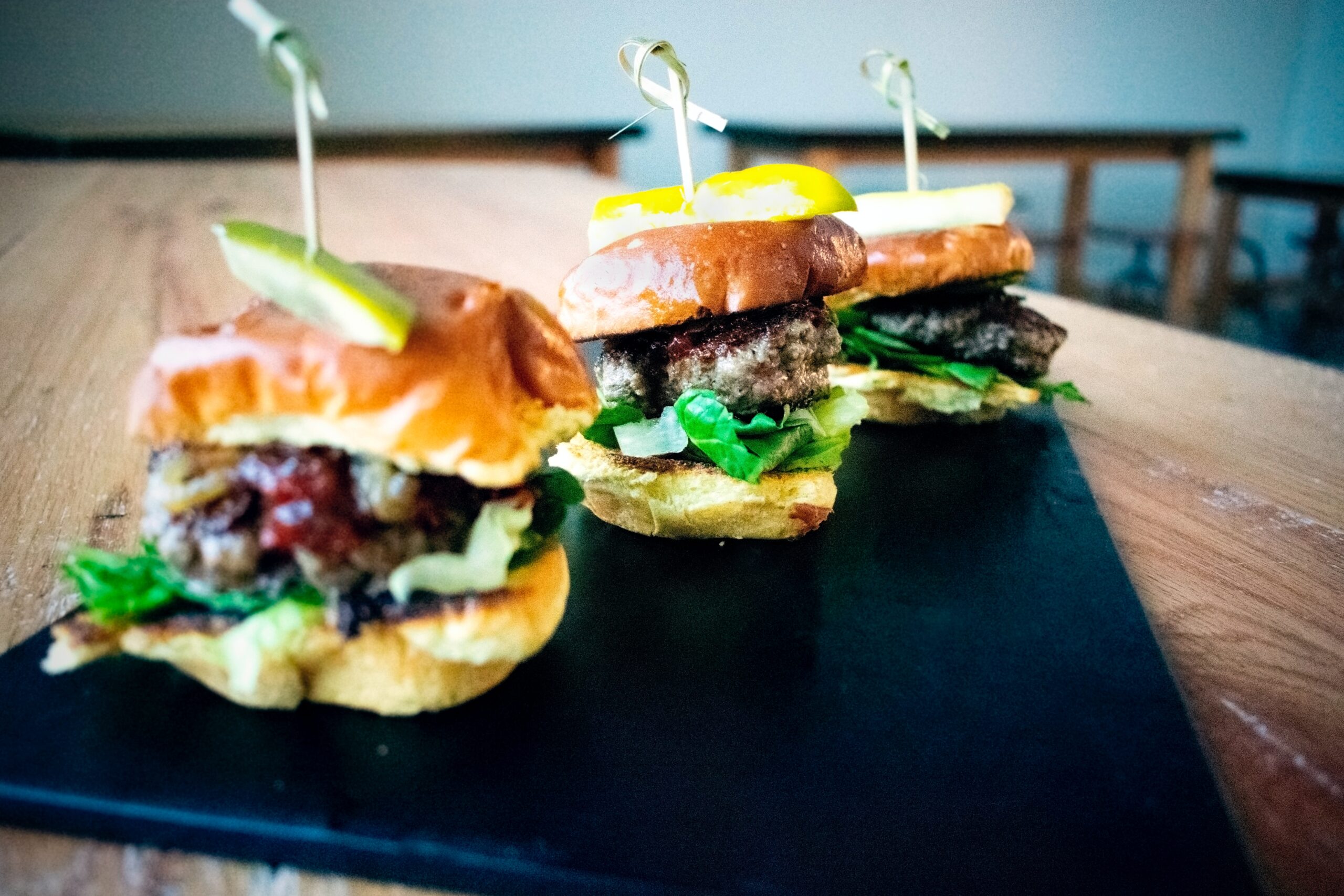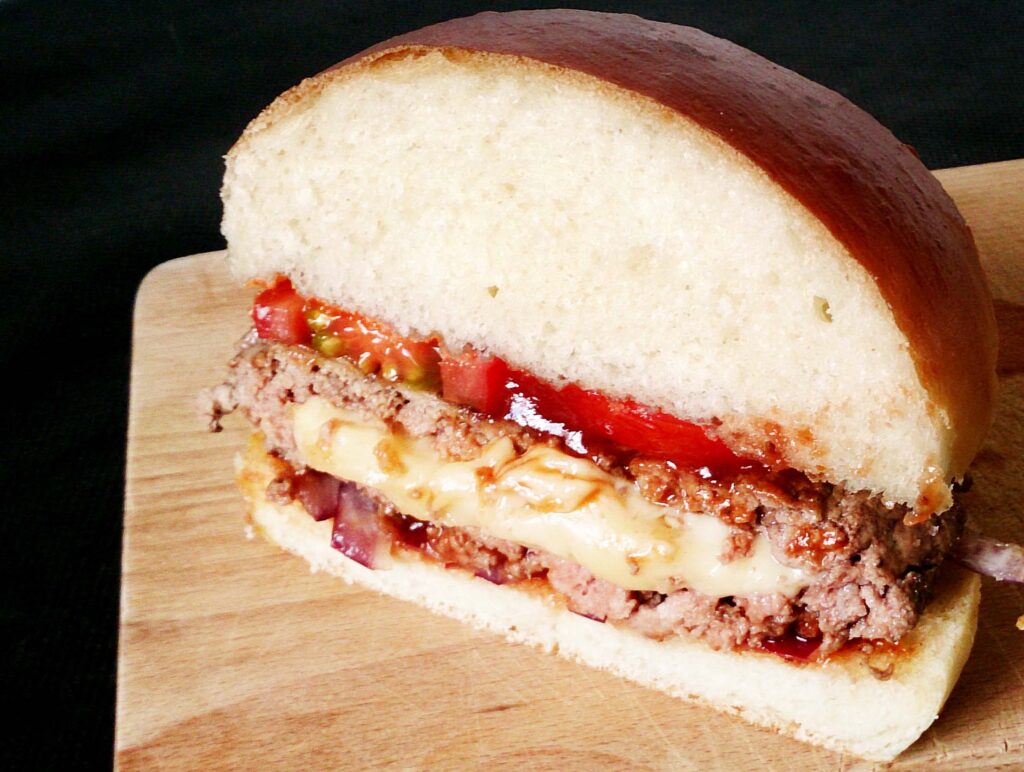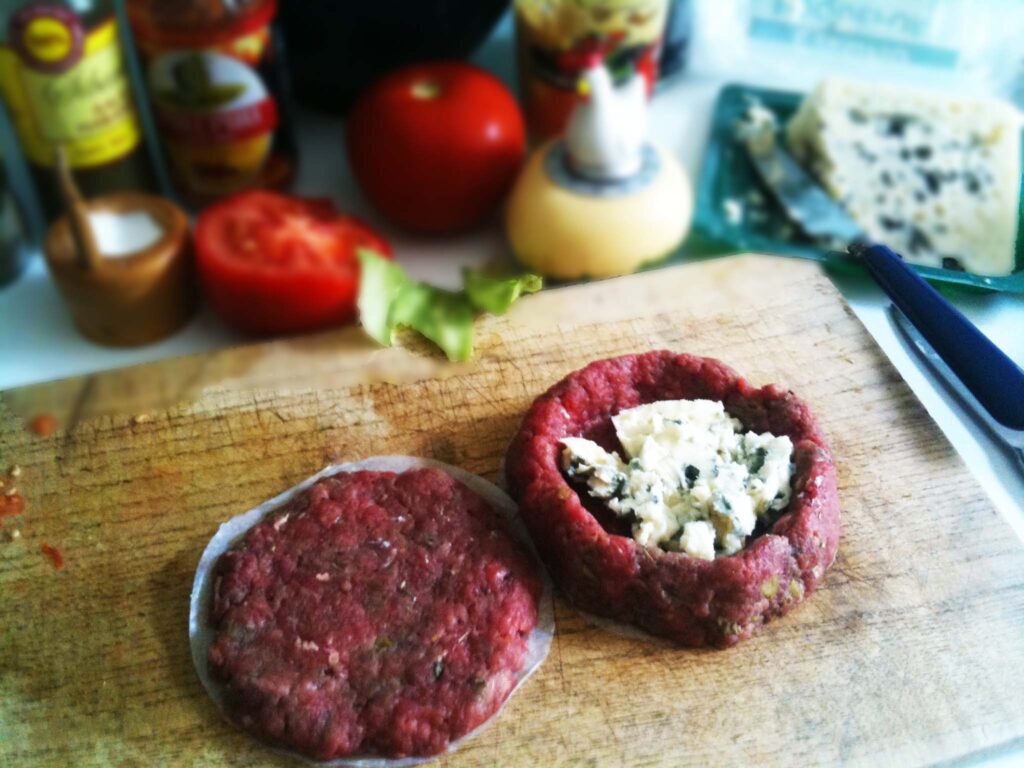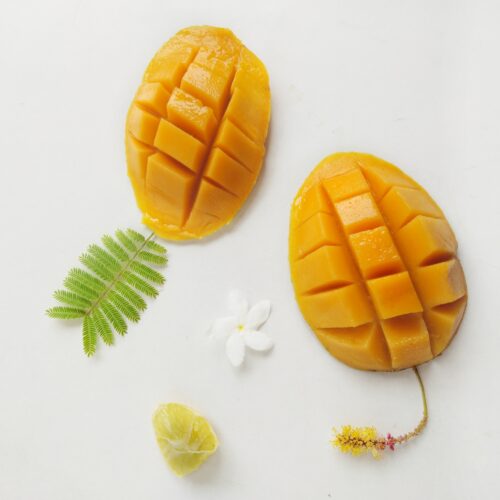From Juicy Patties to Gooey Cheese, These Good Stuffed Burgers Will Have You Coming Back for Seconds (and Thirds!)

by Stefanie Michaels
Stuffing a veggie or regular hamburger is a great way to add extra flavor and texture to your burgers. By adding ingredients such as chopped bacon, caramelized onions, mashed avocado, blue cheese, jalapeños, egg, grilled mushrooms, and guacamole can take a classic patty to the next level.
These ingredients not only add a variety of flavors, such as smoky, sweet, tangy, and spicy, but they also add different textures– creamy, crunchy and meaty making for a more satisfying and delicious burger.
Stuffing a burger allows you to get creative with your toppings and experiment with different flavor combinations.
Here’s a breakdown of options and their flavour profiles:
- Bacon – adds a smoky, salty flavor and a crispy texture to the burger.
- Caramelized onions – add a sweet and savory flavor to the burger.
- Avocado – adds a creamy texture and a subtle, nutty flavor to the burger.
- Blue cheese – adds a tangy, savory flavor and a creamy texture to the burger.
- Jalapeños – adds a spicy and slightly sweet taste to the burger.
- Egg – adds richness and a creamy texture to the burger.
- Grilled mushrooms – add a meaty, earthy flavor and a tender texture to the burger.
- Guacamole – adds a creamy, flavorful and spicy taste to the burger.
How to stuff it?
There are two ways to add stuffings to meat.
- Take an existing store-bought fresh or frozen (thaw) patty and roll it into a ball. Make an indentation in the center put in filling of choice, then pinch the opening together. This goes for veggie patties as well.
- Take two veggie or meat patties, fill in-between and stack onto each other, creating a thicker version to eat. Please note: cooking times may be longer using this method.
If you stuff, then you must…
When stuffing a burger, there are a few food safety warnings to keep in mind!
- Proper cooking temperatures: Ground beef should hit an internal temperature of at least 160°F to ensure that any harmful bacteria are killed. This is incredibly important when stuffing a burger, as the stuffing can create pockets of uncooked meat in the center of the burger.
- Cross-contamination: Be sure to use separate utensils, cutting boards, and cooking surfaces for raw and cooked meats to prevent cross-contamination.
- Stuffed burgers must be handled gently: Use a grill pan with holes to gently moved the stuffed meat from falling out or the burger from falling apart.
- Use ingredients that are safe to eat raw: If you’re using ingredients like lettuce or tomatoes, wash them thoroughly and are safe to eat raw.
- Be aware of allergies: Be mindful of food allergies when stuffing burgers. For example, some people are allergic to shellfish, so you should not load burgers with crab or shrimp if you’re serving them to a group.
- Stuffed burgers should be eaten immediately: Stuffed burgers should be consumed immediately after cooking to avoid food spoilage and food-borne illnesses.
TIP: Raw eggs can contain salmonella so instead of putting the egg directly inside the meat, go ahead and cook it fully first using a skillet, then add it in to your patty. Another option is to scramble the egg, add salsa, cheese or another favourite food item, then add the concoction into the meat.
A little history:
The history of the stuffed burger, also known as a filled or loaded burger, can be traced back to the late 20th century.
The concept of stuffing a burger patty with various fillings such as cheese, mushrooms, onions, or jalapenos became popular in the United States to add flavor and texture to the classic burger.

The idea was to create a more exciting and satisfying burger experience by infusing different tastes and ingredients into the meat.
Stuffed burgers have since become popular in restaurants and have inspired many variations and creative fillings.



